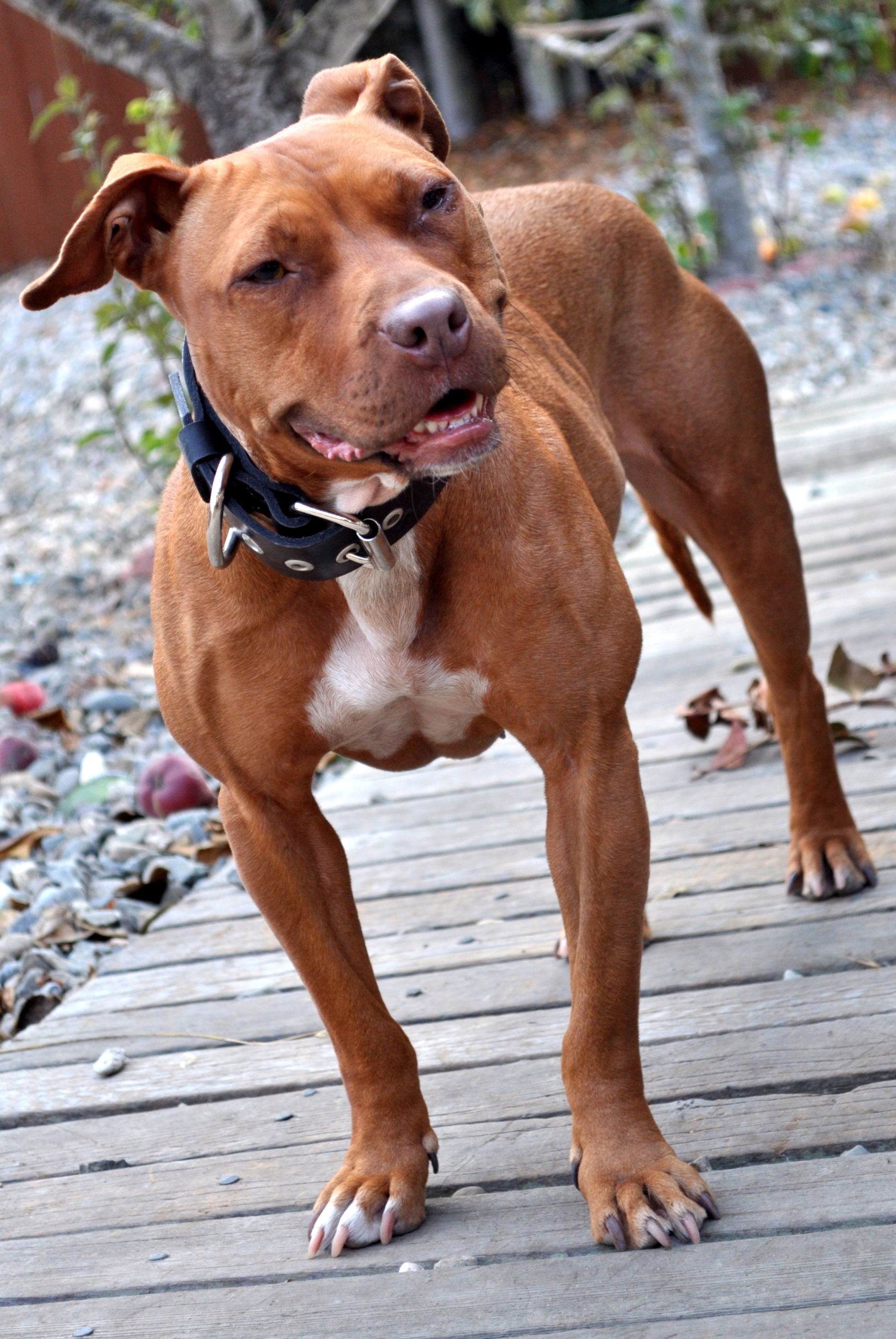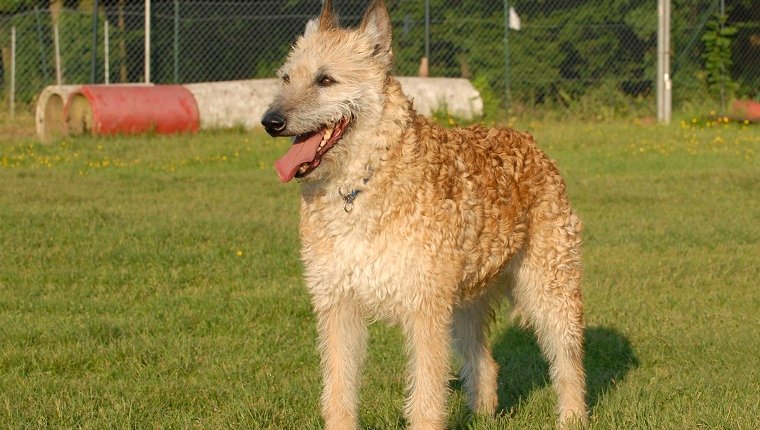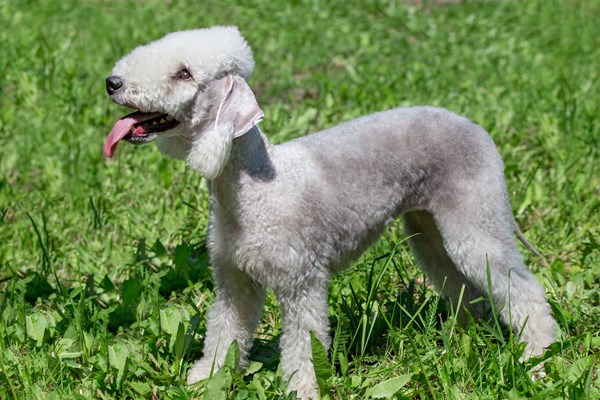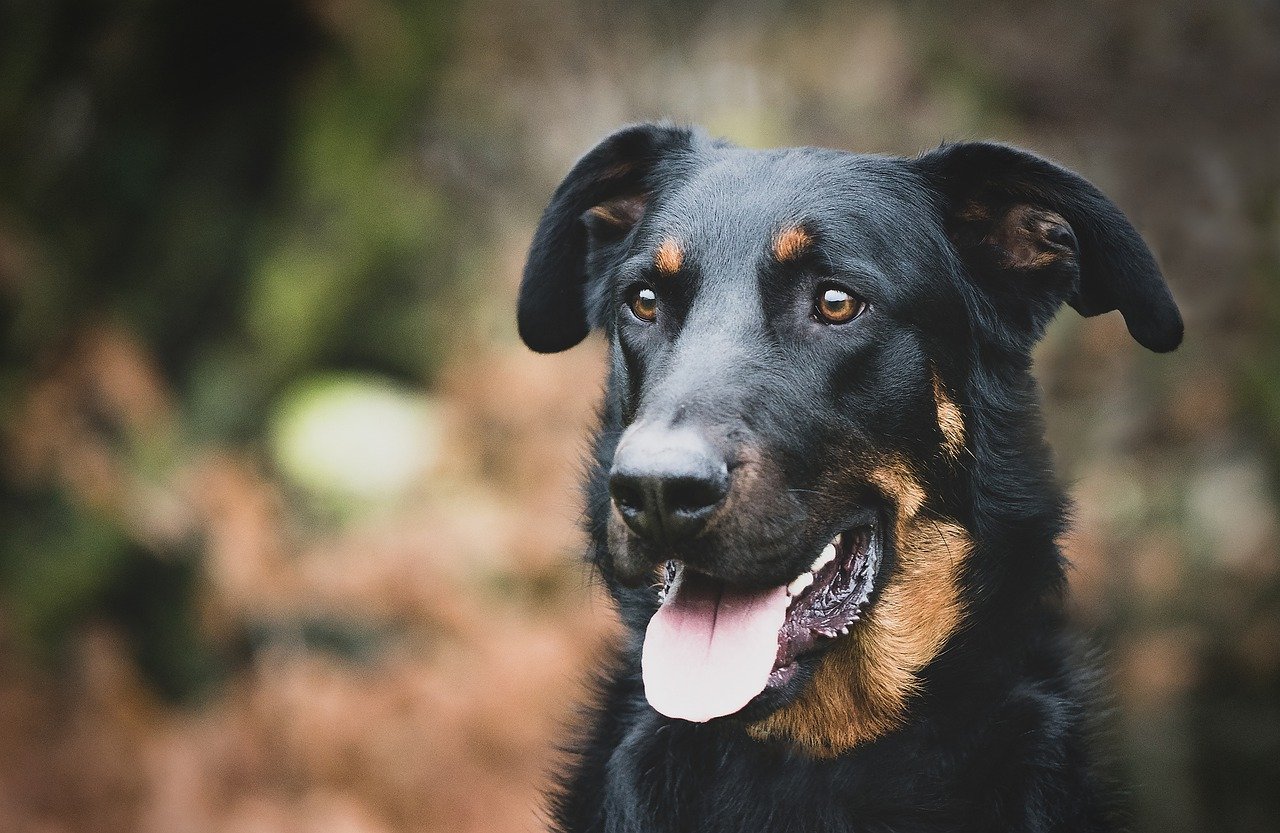The American Pit bull Terrier Overview
American Pit Bull Terrier (APBT) is a breed of companion dog.
Although these canines are muscular and powerful, they are inherently violent toward other animals and not against humans. When properly taught, this breed makes an excellent family pet.
The American Kennel Club (AKC) does not recognize the breed, although the Continental Kennel Club and the United Kennel Club do (UKC).
American Pit Bull Terrier Highlights
- American Pit Bull Terriers are not recommended for anyone who can provide them with little or no attention.
- They must be trained and socialized from an early age to overcome the breed’s proclivities for stubbornness and bossiness, which, when combined with his power, can make him difficult to handle if he hasn’t learned who is in charge.
- In public, your American Pit Bull Terrier must be on a leash to avoid hostility toward other dogs. Allowing these canines to roam freely in dog parks is not a smart idea. While they may not initiate conflict, they never back down from it, and they fight until the last end. American Pit Bulls who are not socialized properly as puppies may develop aggression toward other dogs.
- Almost always, breed-specific law includes this breed. If you travel with your dog, be informed of the restrictions in your own area as well as nearby regions.
- American Pit Bull Terriers have a strong chewing instinct, and their powerful jaws easily destroy cheap or fragile toys. Provide your dog with only robust, sturdy toys that are incapable of being chewed up and ingested.
- American Pit Bull Terriers are best suited to owners who can provide consistent, firm, and fair training.
American Pit Bull Terrier Breed Features & Ratings:
Rated base on a 5 Star Scale
ENERGY LEVEL: 3 Star
EXERCISE REQUIREMENTS: 3 Star
PLAYFULNESS: 3 Star
AFFECTION LEVEL: 3 Star
FRIENDLINESS TO DOGS: 1 Star
FRIENDLINESS TO OTHER PETS: 1 Star
FRIENDLINESS TO STRANGERS: 3 Star
WATCHFULNESS: 5 Star
EASE OF TRAINING: 4 Star
GROOMING REQUIREMENTS: 1 Star
HEAT SENSITIVITY: 3 Star
VOCALITY 5 Star
American Pit Bull Terrier Characteristics:
- Dog Breed Group: Terrier Dogs
- Height: At the shoulder, it should be 17 to 19 inches tall
- Weight: 30 to 85 pounds
- Life Span: 12 to 16 years
- Type: Purebred
- AREA OF ORIGIN: United States
- DATE OF ORIGIN: 19th Century
- OTHER NAMES: APBT, Pit Bull, Pitty, Pit, Pitbull
- Temperament: Affectionate, Aggressive, Clownish, Courageous, Friendly, Intelligent, Loyal, Obedient, Strong Willed, Stubborn
- Activities: Agility and Obedience
- Color: Black, Black and Tan, Blue, Brown, Gray, Red, White, Yellow
- Litter Size: 5 to 8 puppies
- Puppy Prices: On average, between $500 and $1000 USD
American Pit Bull Terrier Health:
Although American Pit Bull Terriers are typically healthy, they, like all breeds, are susceptible to specific health problems.
Although not all American Pit Bull Terriers may contract one or more of these diseases, it is critical to be aware of them if you are contemplating this breed.
Hip Dysplasia (HD) is a deformity of the ball and socket of the hip joint. Depending on the severity of the illness, it can be very painful. Dogs destined for breeding should have their hips x-rayed at the age of two to guarantee they do not have this issue.
Allergies: Allergies are extremely prevalent in APBT/AmStaffs. Typically, environmental allergens such as fleas, grass, pollen, and dust induce skin allergies. They can also be tied to food, however this is a less typical occurrence. Beef, rice, wheat, and corn are all common dietary allergies. Allergies can result in severe itching and discomfort, prompting dogs to dig and chew until they bleed. This is dangerous, as secondary infections can develop in injured tissue. To treat allergies, the source must be determined and, if feasible, removed from the dog’s environment. A veterinarian can assist you in this process, as well as inform you about which allergy symptoms are treatable with medicine.
Hypothyroidism is a thyroid gland dysfunction that results in weight gain, a poor coat, and reproductive problems, among other symptoms. It is most common in middle-aged dogs and is treatable with daily medicine that must be continued for the duration of the dog’s life.
Heart Illness: Heart disease manifests itself in a variety of ways in these dogs, the most prevalent being aortic stenosis. Aortic stenosis is a congenital cardiac condition, which means it is present at birth. It is a condition in which the link between the left ventricle and the aorta becomes abnormally thin. Certain dogs exhibit no or very minimal indicators, while others may exhibit decreased energy or even die suddenly. If your veterinarian detects a cardiac murmur, he or she can confirm the diagnosis using a chest x-ray and ECG.
American Pit Bull Terrier Grooming:
The short coat is sleek and rigid to the touch and is available in a variety of hues, including red, blue, brown, grey, black and white, and brindle.
They require little care and have an easy-to-clean coat that requires only the occasional bath. Maintain the coat’s luster by brushing it with a stiff brush and wiping it down with a cloth.
Brush your American Pit Bull Terrier’s teeth at least twice or three times a week to eliminate tartar and the bacteria that live within.
Brushing your canine’s teeth on a daily basis is even preferable if you want to avoid gum disease and foul breath.
Trim your canine’s nails once or twice a month if he does not naturally wear them down to avoid unpleasant tears and other complications. If they click on the floor, they are excessively lengthy.
Dog toenails contain blood veins, and if you cut too deeply, you risk bleeding – and your dog may refuse to cooperate the next time the nail clippers are pulled out. Therefore, if you are unfamiliar with clipping dog nails, get advice from a veterinarian or groomer.
His ears should be checked weekly for redness or an odor that could indicate infection. When cleaning your dog’s ears, use a cotton ball wet with a moderate, pH-balanced ear cleanser to assist in preventing infections.
When your American Pit Bull Terrier is a puppy, acclimate him to being brushed and checked. Handle his paws repeatedly – dogs are quite possessive of their feet — and examine his lips and ears.
Make grooming a pleasurable process full of praise and prizes, and you’ll build the framework for smooth veterinarian tests and other handling as he grows older.
While grooming, check for sores, rashes, or infection-related symptoms such as redness, soreness, or inflammation of the skin, nose, mouth, and eyes, as well as on the feet.
Clear eyes with no redness or discharge are ideal. Your thorough weekly examination will assist you in identifying potential health problems early.
American Pit Bull Terrier Exercise:
The American Pit Bull Terrier is known as an athletic dog breed with a lot of energy, which means that regular exercise is necessary.
They will gain most from dog sports that test their mental and physical stamina.
Regardless of the sort of exercise, ensure that it occurs at least twice daily. Without a way to channel all of that energy, your dog may become destructive, hyperactive, or exhibit other behavioral problems.
They enjoy chewing and have strong jaws, so keep durable chew toys on hand.
American Pit Bull Terrier Training:
As with every dog breed, the American Pit Bull Terrier requires proper training.
This is a fairly intelligent canine breed that can be stubborn when given the opportunity. Obedience training is necessary for managing your dog.
Training instills confidence in your dog and provides structure. Because pit bull-type canines are frequently misunderstood and even portrayed incorrectly, some people will fear your dog.
American Pit Bull Terrier trainers and animal specialists frequently urge that owners obtain the Canine Good Citizen certification as an additional step toward responsible dog ownership.
American Pit bull Terrier Food and Nutrition:
American Pit Bull Terriers, on average, require 1.5 to 2.5 cups of high-quality dry food per day, divided into two meals. Always ensure that they have access to clean, fresh drinking water.
Bear in mind that as your dog ages, their nutritional requirements will fluctuate.
Consult your veterinarian to develop a feeding plan for your dog that is unique to him.
American Pit Bull Terrier Temperament and Personality:
These canines adore people and are unaware that their size precludes them from being lap dogs.
They are watchdogs in that they may alert you to the presence of strangers, although this is mostly due to their eagerness to receive “their” guests.
While their affection for people precludes them from being effective guard dogs, their fearlessness is unsurpassed, and they will defend their family with their lives.
American Pit Bull Terriers, like all dogs, require early socialization – exposure to a variety of people, sights, noises, and experiences — when they are young.
Socialization enables your puppy to develop into a well-rounded canine.
American Pit Bull Terrier Care/Upkeep:
The American Pit Bull Terrier’s short, smooth coat requires little more than normal care.
Although some dogs’ nails will naturally wear down as they walk, the majority will require frequent nail trimming to maintain their feet healthy. Bathe the dog as needed to keep the skin and coat healthy and clean.
The American Pit Bull Terrier is an extremely affectionate, outgoing, and lively dog. The breed can be an excellent companion for a wide variety of busy homes.
However, keep in mind that the breed has a high prey drive and a history of dog fighting, which means the dog should be closely observed and introduced to other animals and small children carefully.
This includes dog park outings. Always walk your canine on a leash and never let it go loose. While these dogs do not initiate conflict, they do not back down when confronted.
However, with proper training and socialization, the breed may coexist peacefully with children and even other pets. The American Pit Bull Terrier is recognized for its strong family bonds.
This breed can develop into a devoted family companion and lifelong buddy.
When you possess an American Pit Bull Terrier, you must constantly watch local legislation in your jurisdiction and those of any other jurisdictions through which you travel.
American Pit Bull Terrier Relationship with Children and Other Pets
American Pit Bull Terriers adore children, and we’re not talking about the breakfast variety.
They make excellent playmates since they are sturdy, lively, and tolerant. Having said that, no dog, regardless of size or breed, should ever be left alone with children.
When an adult cannot be present to supervise, dogs should be crated or kenneled, much more so as they reach sexual maturity and begin to test the idea of becoming “pack” leader.
Allow children to refrain from pulling on a dog’s ears or tail. Educate children to never approach a dog that is sleeping or eating, or to attempt to take away the dog’s food.
Due to their dog-fighting background, some American Pit Bull Terriers retain an inherent predisposition to be violent toward other dogs.
However, if they are socialized early and taught what behavior is expected of them, this hostility can be decreased or eliminated, and many are dog- and cat-friendly.
To be safe, they should constantly be supervised when other pets are present.
American Pit Bull Terrier Names
| Rank | Boy Names | Girl Names |
| 01 | Buddy | Molly |
| 02 | Riley | Bella |
| 03 | Toby | Coco |
| 04 | Jack | Lady |
| 05 | Ollie | Abbie |
| 06 | Rocco | Ellie |
| 07 | Oliver | Zoey |
| 08 | Oscar | Kona |
| 09 | Moose | Gracie |
| 10 | Loki | Marley |
All About American Pit Bull Terrier
The American Pit Bull Terrier is a bully breed that is frequently referred to as a pit bull.
Indeed, the word “pit bull” does not refer to a breed but to the American Pit Bull Terrier, Bull Terrier, American Staffordshire Terrier, and Staffordshire Bull Terrier.
According to some, the American Pit Bull Terrier and the American Staffordshire Terrier are synonymous. Others, equally vehemently, assert that they are altogether separate breeds.
However, all experts believe that the confusion began with the AKC’s decision in the early 1930s to rename it the American Staffordshire Terrier in order to distance it from its pit-fighting heritage.
The American Pit Bull Terrier has not been recognized by the AKC, but the somewhat smaller American Staffordshire Terrier has.
Frequently, bull breeds are severely misinterpreted. The characteristics that make these canines such persistent competitors in obedience and agility competitions also attract very unscrupulous individuals seeking strong opponents for their dog fighting rings.
As a result of this unfortunate situation, bull breeds, particularly the APBT, have developed a reputation for being deadly in recent years.
However, widespread misunderstanding and fear generated by the behavior of a small number of dogs kept by criminally irresponsible humans have resulted in laws banning the breed in a number of towns and countries worldwide.
As an owner of an American Pit Bull Terrier, you must be aware that you may encounter hatred and fury from those who are unaware of your amazing dog.
This breed is not for everyone, particularly those who are unwilling to devote time in training and socialization and who are unable or unable to provide consistent firm supervision.
When properly trained and socialized, the American Pit Bull Terrier is a terrific child companion.
He is friendly and loving toward people but frequently makes an inadequate security dog due to his tail-wagging haste to greet the person at the door.
American Pit Bull Terriers are faithful and obedient to their family and will defend them to the death if required.
These canines are incredibly bright and quickly pick up commands and tricks. They are full of vitality and enjoy being involved in everything that goes on around them.
They retain their puppy-like disposition well into adulthood, and their liveliness makes them a pleasure to live with. Once you’ve met and become acquainted with this breed, you’ll wonder how you survived without one.
American Pit Bull Terrier History:
The origins of the current American Pit Bull Terrier can be traced all the way back to England in the early nineteenth century.
The contemporary APBT was developed through crossbreeding between “bully” type dogs and terriers.
Although they were not recognized as a breed and were significantly smaller than the contemporary APBT, the early “bulldogs” were utilized as working dogs, corralling unruly bulls for butchers and farmers.
These “bulldogs” were similar to modern APBTs but were much smaller, weighing between 15 and 30 pounds.
The same boldness and perseverance that made these canines adept at corralling dangerous bulls also made them excellent at bull baiting, a blood sport. 1835 marked the end of lethal bull baiting and the development of an even more heinous blood sport: dog fighting.
Chauncy Bennet founded the UKC in 1898 as a breed registry entirely dedicated to the registration and acceptance of pit bulls.
Because the AKC was opposed to pit bulls, Bennet tried to start an organization to promote the breed as performing dogs.
Mr. Bennet added “American” and first omitted the word “pit” from the APBT’s name, but public outrage resulted in the word “pit” being reinstated—hence, the American Pit Bull Terrier.
The AKC chose to register pit bulls under a different name—the Staffordshire terrier—which was later renamed the American Staffordshire terrier (AST) in 1972.
Pit bulls and ASTs were physically indistinguishable until 1936. After 1936, ASTs were bred exclusively for conformation, and their breed standards became significantly stricter.
APBTs were being bred for both performance (fighting) and conformation shows, and the breed’s standard loosened significantly.
The ASTs became more “flashy” phenotypically, with blockier heads, broader chests, and a thicker jaw, whereas the APBTs ranged in phenotype from lanky to stocky.
Although the APBT’s appearance changed, relative weight, size, and proportion remained stable, and dogs weighing more than 60 pounds were uncommon.
Both ASTs and APBTs were designed to be extraordinarily robust and human-friendly, as well as athletic, courageous, and tenacious.
Numerous countries, notably the United Kingdom, the Canadian province of Ontario, and numerous local governments in the United States, have banned or restricted these dogs.
Where to Adopt American Pit bull Terrier:
American Pit Bull Terriers and pit bull hybrids are frequently available for adoption, making up to 20% of dogs in shelters.
Consult local animal shelters, animal control, and rescue organizations to identify pit bulls in need of a home.
More Dog Breeds and Further Research:
Before deciding whether the American Pit Bull Terrier is the right breed for you, conduct extensive research. To learn more, speak with other owners, trustworthy breeders, and rescue organizations.
If you’re interested in related breeds, you can use these to compare their advantages and disadvantages.
American Pit Bull Terrier Fun Facts:
- Pit Bulls are nice.
- Largest in the world.
- They used to be a Mascot for the US Army.
- They can climb walls.
- They are perfect as therapy dogs.
- They are emotional, too.
- They are useful for sniffing jobs.
- Pit Bulls are also working in search and rescue
Frequently Asked Questions (FAQs):
Quite quickly, the breed earned a reputation for being a robust, defensive dog that is yet kind and family-friendly. When these “bulldogs” immigrated to America with their owners, they began a new career as all-purpose farm dogs.
Because of their dog-fighting heritage, some American Pit Bull Terriers retain a tendency to be aggressive with other dogs, but if they are socialized early and trained to know what behavior is expected of them, that aggression can be minimized or overcome, and many are dog- and cat-friendly.




